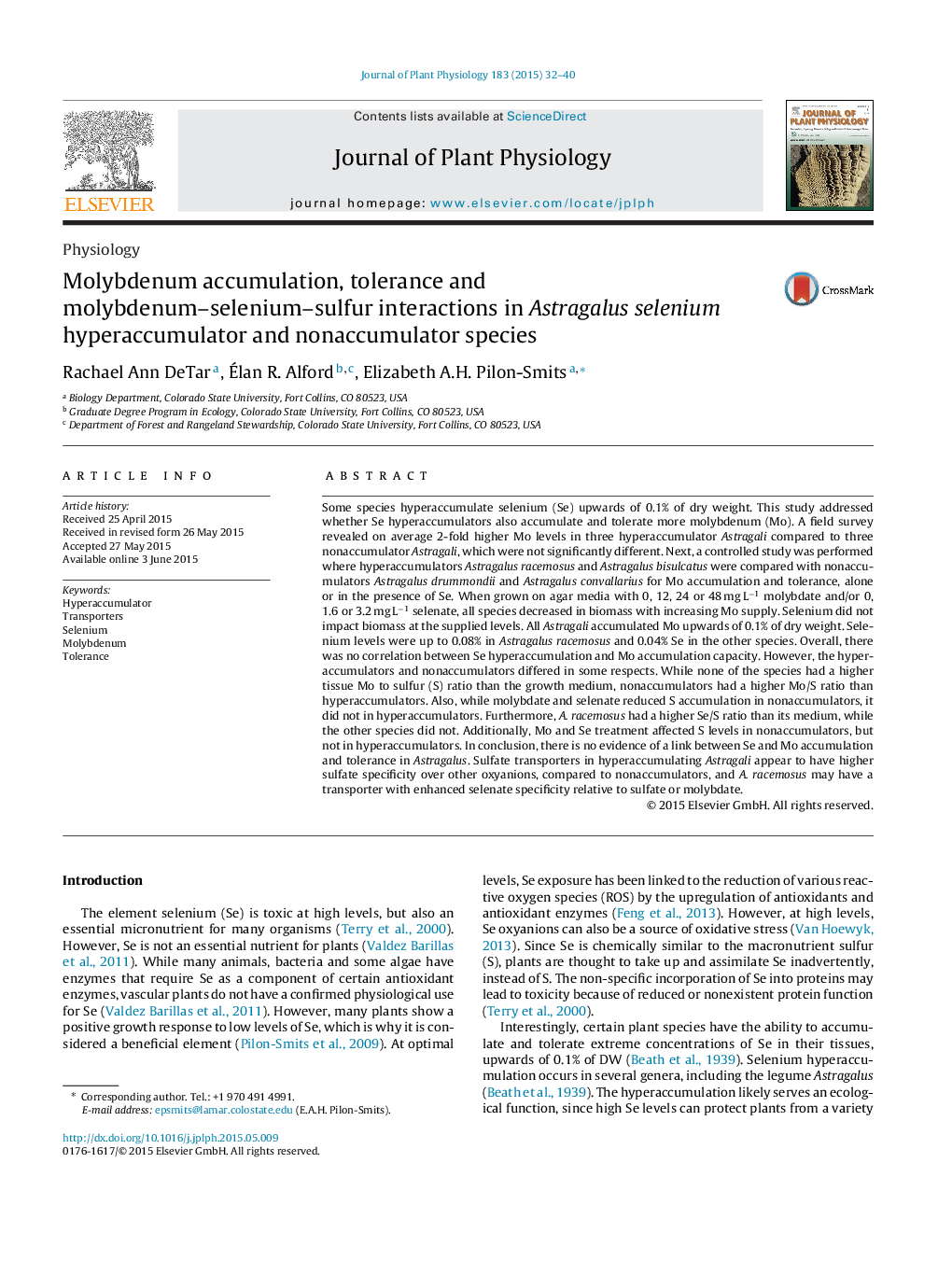| Article ID | Journal | Published Year | Pages | File Type |
|---|---|---|---|---|
| 8387375 | Journal of Plant Physiology | 2015 | 9 Pages |
Abstract
Some species hyperaccumulate selenium (Se) upwards of 0.1% of dry weight. This study addressed whether Se hyperaccumulators also accumulate and tolerate more molybdenum (Mo). A field survey revealed on average 2-fold higher Mo levels in three hyperaccumulator Astragali compared to three nonaccumulator Astragali, which were not significantly different. Next, a controlled study was performed where hyperaccumulators Astragalus racemosus and Astragalus bisulcatus were compared with nonaccumulators Astragalus drummondii and Astragalus convallarius for Mo accumulation and tolerance, alone or in the presence of Se. When grown on agar media with 0, 12, 24 or 48 mg Lâ1 molybdate and/or 0, 1.6 or 3.2 mg Lâ1 selenate, all species decreased in biomass with increasing Mo supply. Selenium did not impact biomass at the supplied levels. All Astragali accumulated Mo upwards of 0.1% of dry weight. Selenium levels were up to 0.08% in Astragalus racemosus and 0.04% Se in the other species. Overall, there was no correlation between Se hyperaccumulation and Mo accumulation capacity. However, the hyperaccumulators and nonaccumulators differed in some respects. While none of the species had a higher tissue Mo to sulfur (S) ratio than the growth medium, nonaccumulators had a higher Mo/S ratio than hyperaccumulators. Also, while molybdate and selenate reduced S accumulation in nonaccumulators, it did not in hyperaccumulators. Furthermore, A. racemosus had a higher Se/S ratio than its medium, while the other species did not. Additionally, Mo and Se treatment affected S levels in nonaccumulators, but not in hyperaccumulators. In conclusion, there is no evidence of a link between Se and Mo accumulation and tolerance in Astragalus. Sulfate transporters in hyperaccumulating Astragali appear to have higher sulfate specificity over other oxyanions, compared to nonaccumulators, and A. racemosus may have a transporter with enhanced selenate specificity relative to sulfate or molybdate.
Related Topics
Life Sciences
Agricultural and Biological Sciences
Agronomy and Crop Science
Authors
Rachael Ann DeTar, Ãlan R. Alford, Elizabeth A.H. Pilon-Smits,
